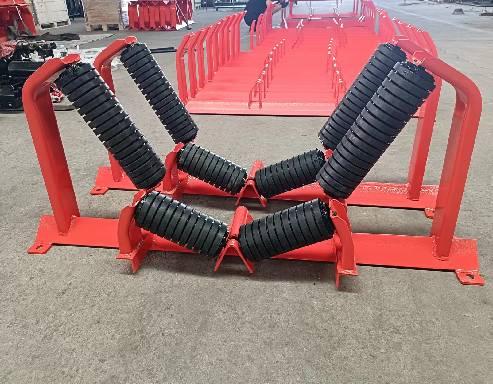 Afrikaans
Afrikaans  Albanian
Albanian  Amharic
Amharic  Arabic
Arabic  Armenian
Armenian  Azerbaijani
Azerbaijani  Basque
Basque  Belarusian
Belarusian  Bengali
Bengali  Bosnian
Bosnian  Bulgarian
Bulgarian  Catalan
Catalan  Cebuano
Cebuano  Corsican
Corsican  Croatian
Croatian  Czech
Czech  Danish
Danish  Dutch
Dutch  English
English  Esperanto
Esperanto  Estonian
Estonian  Finnish
Finnish  French
French  Frisian
Frisian  Galician
Galician  Georgian
Georgian  German
German  Greek
Greek  Gujarati
Gujarati  Haitian Creole
Haitian Creole  hausa
hausa  hawaiian
hawaiian  Hebrew
Hebrew  Hindi
Hindi  Miao
Miao  Hungarian
Hungarian  Icelandic
Icelandic  igbo
igbo  Indonesian
Indonesian  irish
irish  Italian
Italian  Japanese
Japanese  Javanese
Javanese  Kannada
Kannada  kazakh
kazakh  Khmer
Khmer  Rwandese
Rwandese  Korean
Korean  Kurdish
Kurdish  Kyrgyz
Kyrgyz  Lao
Lao  Latin
Latin  Latvian
Latvian  Lithuanian
Lithuanian  Luxembourgish
Luxembourgish  Macedonian
Macedonian  Malgashi
Malgashi  Malay
Malay  Malayalam
Malayalam  Maltese
Maltese  Maori
Maori  Marathi
Marathi  Mongolian
Mongolian  Myanmar
Myanmar  Nepali
Nepali  Norwegian
Norwegian  Norwegian
Norwegian  Occitan
Occitan  Pashto
Pashto  Persian
Persian  Polish
Polish  Portuguese
Portuguese  Punjabi
Punjabi  Romanian
Romanian  Russian
Russian  Samoan
Samoan  Scottish Gaelic
Scottish Gaelic  Serbian
Serbian  Sesotho
Sesotho  Shona
Shona  Sindhi
Sindhi  Sinhala
Sinhala  Slovak
Slovak  Slovenian
Slovenian  Somali
Somali  Spanish
Spanish  Sundanese
Sundanese  Swahili
Swahili  Swedish
Swedish  Tagalog
Tagalog  Tajik
Tajik  Tamil
Tamil  Tatar
Tatar  Telugu
Telugu  Thai
Thai  Turkish
Turkish  Turkmen
Turkmen  Ukrainian
Ukrainian  Urdu
Urdu  Uighur
Uighur  Uzbek
Uzbek  Vietnamese
Vietnamese  Welsh
Welsh  Bantu
Bantu  Yiddish
Yiddish  Yoruba
Yoruba  Zulu
Zulu tail pulley
Understanding Tail Pulleys in Conveyor Systems
Tail pulleys are essential components in conveyor systems, serving an important role in the overall functionality and efficiency of material handling. They are located at the end of a conveyor belt and play a crucial role in the belt's operation. Understanding the significance of tail pulleys can help industries improve their conveyor system designs, enhance productivity, and reduce wear and tear on equipment.
A tail pulley, often referred to as a return pulley, is designed to support the belt as it returns to the starting point after delivering the material. This component helps maintain tension in the belt, preventing slippage and ensuring smooth operation. Without a properly functioning tail pulley, a conveyor system can experience increased friction, leading to premature wear of both the belt and other mechanical components.
Tail pulleys are designed in various configurations, depending on the specific requirements of the conveyor system. Common designs include heavy-duty tail pulleys made from robust materials such as steel or cast iron, which are capable of withstanding high loads and abrasive conditions. Additionally, tail pulleys can be equipped with various features, including lagging, which enhances friction to provide better grip for the conveyor belt. This is particularly important in applications where heavy or slippery materials are transported.
tail pulley

One of the primary functions of a tail pulley is to maintain the alignment of the belt. When a conveyor belt misaligns, it can lead to several issues, such as uneven wear on the belt, increased energy consumption, and even damage to the conveyor system itself. Tail pulleys help keep the belt centered and aligned, allowing for the continuous and efficient transport of materials.
Moreover, tail pulleys play a crucial role in tensioning the conveyor belt. Proper belt tension is vital for optimal performance. If the belt is too loose, it can slip, causing material to be lost and leading to increased maintenance costs. Conversely, if the belt is too tight, it can put undue stress on the motor and other mechanical components, potentially leading to failures. Tail pulleys can be designed to allow for adjustment, ensuring that the correct tension is maintained throughout the conveyor system's operation.
Maintenance of tail pulleys is also essential for ensuring their longevity and effectiveness. Regular inspections should be conducted to check for signs of wear, such as surface damage or wobbling. Bearing lubrication is another critical aspect of maintenance. Well-lubricated bearings will function more smoothly, reducing friction and prolonging the life of the pulley.
In conclusion, tail pulleys are vital components of conveyor systems, providing support, alignment, and tensioning for the conveyor belt. Their design and maintenance play a crucial role in the efficiency and longevity of the entire system. By understanding the importance of tail pulleys and implementing regular maintenance practices, industries can enhance their material handling processes, reduce downtime, and ensure that their conveyor systems operate at peak performance. As industries continue to evolve and adopt more advanced technologies, the role of tail pulleys will remain indispensable in the realm of logistics and material handling.
-
Revolutionizing Conveyor Reliability with Advanced Rubber Lagging PulleysNewsJul.22,2025
-
Powering Precision and Durability with Expert Manufacturers of Conveyor ComponentsNewsJul.22,2025
-
Optimizing Conveyor Systems with Advanced Conveyor AccessoriesNewsJul.22,2025
-
Maximize Conveyor Efficiency with Quality Conveyor Idler PulleysNewsJul.22,2025
-
Future-Proof Your Conveyor System with High-Performance Polyurethane RollerNewsJul.22,2025
-
Driving Efficiency Forward with Quality Idlers and RollersNewsJul.22,2025





























